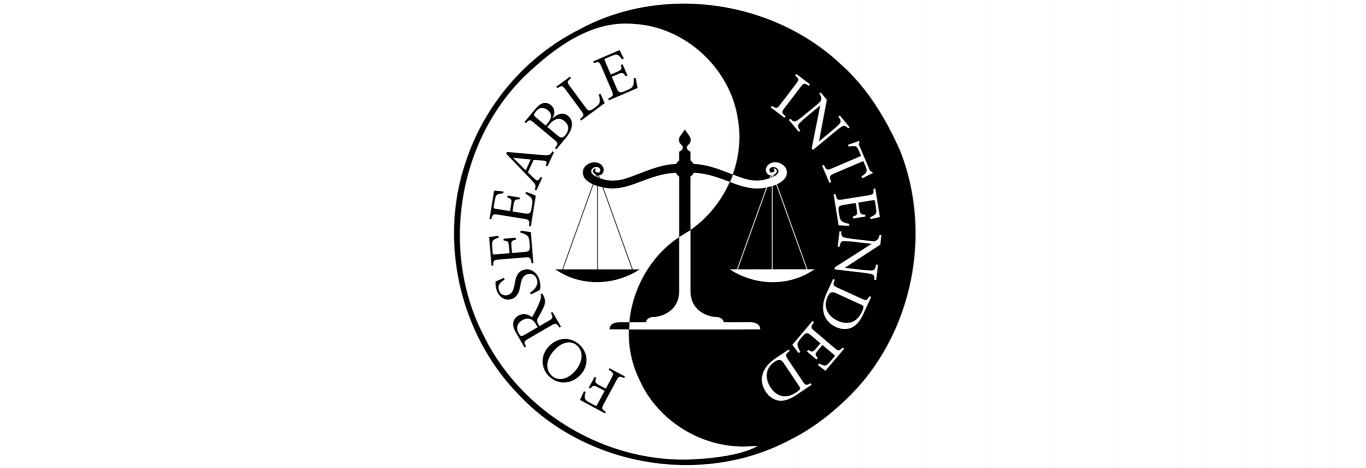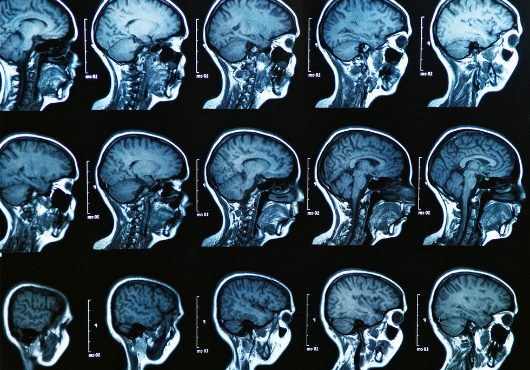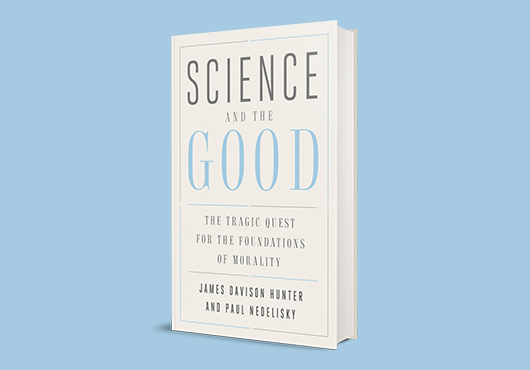
ABSTRACT
The formulation of the rule of double effect (RDE) and its application have been heavily debated in philosophy, theology, and bioethics throughout the last 50 years. We argue that much of this controversy results from a history of misunderstanding or misapplication of the RDE. In this paper, we offer a reformulation of the RDE that establishes the preconditions that need to be met for the RDE to be appropriately applied. We also defend the importance of evaluating intention in making moral judgments and clarify the distinction between intention and foresight necessary for grounding the RDE. We then offer examples where the RDE may be applied to ethically evaluate clinical practices and health policy initiatives.
The formulation of the rule of double effect (RDE) [1] and its application have been heavily debated in philosophy, theology, and bioethics throughout the last 50 years. Critics of the RDE have pointed to several weaknesses, including, most prominently, its reliance on intention to determine whether an act is right or wrong. Intentions, these critics charge, are too difficult to determine. It has also been argued that the RDE is not sufficiently grounded in a more general ethical theory.
Traditionally, the RDE has been applied to justify actions that may produce a bad effect so long as the following conditions are met:
- The action itself is good or at least neutral;
- The good effect, not the bad effect, is what is intended;
- The good effect is not produced by the bad effect;
- There is a proportionately grave reason for permitting the bad effect. [2]
The classic case for applying the RDE in medicine is the treatment of pain at the end of life when increasing doses of morphine may hasten death. Applying the RDE, it is argued that the action of treating pain with morphine itself is good (or at least not objectionable), the relief of suffering, not death, is what is intended by the action of giving morphine, the possible death of the patient is not the means by which morphine achieves the good of relieving pain, and, given intense and severe pain and otherwise imminent death, there is a proportionately grave reason for permitting the risk of hastening death. Though this case is widely accepted as a valid application, attempts have been made to stretch the application of the RDE beyond its scope.
Some of these abuses of the RDE border on deliberate deception. For example, Jack Kevorkian’s lawyer, Geoffrey Fieger, invoked double effect to defend Kevorkian as he was being charged with murder for euthanizing patients. [3] Fieger argued that Kevorkian’s intent was to relieve suffering, not cause death. While this defense may have been more credible had Kevorkian used morphine, his use of carbon monoxide cannot be justified by the RDE. Carbon monoxide only relieves pain by killing patients, which violates condition iii, above.
The RDE has also been misapplied or misunderstood, driven by several particularly significant errors in interpreting the RDE. In making these errors, both opponents as well as proponents fail to articulate what the RDE is and what the appropriate contexts are in which the RDE may be effectively and helpfully employed.
One commonly made error is to misunderstand or dismiss entirely the distinction between intention and foresight; another is to dismiss the relevance of intention to ethical evaluation of human acts in general. It is argued that if one can foresee that some event may follow upon one’s intended end, then that foreseen event must be encompassed in that which is intended. Furthermore, it is argued that people are unreliable in picking out that which they intend from that which they do not intend yet foresee as a consequence. As such, assessing the intention of an actor is heavily reliant on assessing the truth value of testimony. In what follows, we work to mitigate this error, carefully articulating and defending the importance of intention and the distinction between intention and foresight. To do so, we draw on developments in philosophy of mind and action theory to ground our reformulation.
Yet another error involves accepting as paradigmatic cases in which the RDE has historically been misapplied. Several historical misapplications of the RDE provide easy targets for opponents of double effect, while misguiding those who are in support of its use. For example, proponents of RDE who are opposed to abortion have attempted to use double effect to justify operating on a tubal ectopic pregnancy. While we believe the intervention may be justified on other grounds, attempting to justify the operation through RDE stretches the distinction between intention and foresight beyond what is credible, as it is implausible to argue that the termination of the pregnancy is merely foreseen. The action intended (removing the section of the tube that contains the fetus) necessarily involves termination of the pregnancy. For the RDE to be viable, the integrity of the distinction between intention and foresight must be maintained.
Why Intention Matters
To support the relevance of a distinction between intention and foresight, it is necessary to understand the importance of intention in moral deliberation. Though it is fair to note that intentions can be difficult to consistently evaluate correctly, it is imperative that they not be dismissed. Intentions ground the assessment of an agent’s actions, as can be shown in several commonplace examples. For instance, when someone breaks something, she may be more easily forgiven if it was not intended but resulted from an accident. In conversation, whether or not someone is held accountable for what came across as an offensive comment may be weighted differently if the offense was genuinely not intended. In court, whether an alleged killer is convicted of murder or manslaughter involves the jury analyzing the killer’s intentions, not simply the consequence of the action. In just these few examples, we can illustrate how intention plays a role in our common moral evaluations. Intention matters in moral deliberation, but it may be necessary to be more specific about the distinction between intention and foresight if the RDE is to retain its credibility and ethical applicability.
What Intention Is Not
As noted above, critics of the RDE are especially skeptical about its reliance on intention. They argue that intentions are difficult, if not impossible, to judge, making the evaluative judgment of an action based on intentions implausible. Before challenging this claim, it is important here to clarify what intentions are not.
Intentions are not beliefs. While intentions are often formed against a background of conditions formed by beliefs, intentions themselves cannot be reduced to beliefs. It is possible that one may intend what one does not believe possible and vice versa. Consider an individual trying to sketch a self-portrait. The young and unpracticed artist may intend to sketch an accurate representation with no belief that it is actually possible given the lack of experience. Furthermore, beliefs alone cannot motivate action; though the way one acts may conform to a set of beliefs regarding how one should act, the belief itself does not direct the action. In other words, one must form an intention of acting on a belief that is distinct from the belief itself.
Nor are intentions desires or motives. Similar to the irreducibility of intention to belief, one can see how intention is not reducible to desire : one may intend to do what one does not desire to do. For example, Jane may intend to spend all day in court without desiring to do so. Conversely, one can desire to do what one does not intend, as shown by cases of practicing self-control. Mark may desire to spend the day binge watching his favorite series with no intention of actually doing so. While one may form intentions in response to desire, and a desire may give a reason for acting, desiring alone is not enough to move an agent to act – an intention must be formed. One may be motivated to form an intention to act without ever doing so.
Intention as Distinguished from Foresight
Drawing upon a growing literature in philosophy of mind, we define an intention as “an irreducibly simple attitude, ascribable to an agent, that takes as its object a proposition about an event that the agent himself chooses to bring about under a definite description.” [4] Furthermore, “to have an intention in acting means that an agent has acted or is acting, and that one can ascribe to the agent’s act the choice of a complete act—both an end and a means of achieving that end.” [5] In other words, the formulation of an intention includes the end toward which the agent acts and the means through which the agent works to bring about the end which has been set. When one intends to turn on a light, one forms the intention to flip the switch that will result in the light being turned on. This is different someone desiring that the light be turned on, with no intention of getting up to turn on the light. There may be circumstances that prevent the end from being actualized—perhaps the light bulb has burned out without the agent knowing—but these additional circumstances do not prevent the agent from forming and acting on the intention to flip the switch in intending to turn on the light.
Clarifying what we mean by intention provides the opportunity to distinguish intention from foresight. As noted above, it is often argued that the distinction between intention and foresight is unintelligible; yet, even though it may be difficult to distinguish intention from foresight, especially when relying on someone else’s testimony about her intentions, this uncertainty does not entail that a distinction does not exist. The formulation of this distinction requires a look into the logical implications and the descriptions of events that follow from the formulation of intention.
Let us take as example the following sentence fragments concerning a person with insomnia, Ann, who attempts to resolve the problem using sleep aids.
p) Ann intends to address her insomnia;
q) Ann intends to take an over the counter sleeping aid to help her fall asleep;
r) Ann does not intend, though foresees the possibility, that she will be drowsy the following day.
In evaluating the intention and foresight of her action, several conditions must be met in order for Ann to credibly argue that the drowsiness was only foreseen, not intended. These include that:
- Taking sleep aids does not describe the same event as being drowsy the following day;
- Ann’s relief from insomnia does not describe the same event as Ann being drowsy the next day;
- The possible next day drowsiness is spatiotemporally separable from the event of taking the sleep aid;
- The possibility of being drowsy the next day is spatiotemporally separable from getting a good night’s sleep;
- The foreseeable result of being drowsy the next day is not already logically entailed by her resolving her insomnia;
- Being drowsy is not Ann’s further intention in taking the sleep aid;
- Ann does not intend to resolve her insomnia tonight by way of being drowsy tomorrow.
So long as at least these conditions are met, it is reasonable for Ann to argue that, though she foresaw the possibility of being drowsy, she did not intend this event when she took the sleep aid to address her insomnia. It was possible that this foreseen event would be brought about, but being drowsy the next day is separate from bringing about the end which Ann intended – being able to fall asleep.
Reformulation of the Rule of Double Effect
In defending the RDE, we have been more specific about the distinction between intention and foresight and have shown why intention matters in judging the morality of an action. One further clarifying step is to be transparent about the preconditions that must be fulfilled before resorting to use of the RDE. These are often assumed but not spelled out.
In living the moral life, it is not uncommon that one is forced into conflict between a duty to do good and a duty to avoid doing wrong. One may employ the RDE in trying to resolve such conflicts provided that:
- the situation is one in which at least two effects are foreseen, one of which, if intended, is morally good and the other morally bad;
- all other attempts to secure the good effect without risking the bad have been exhausted;
- the good and bad effects at issue would result directly from an act of the agent, not from the cooperation of another person acting as an intervening or secondary agent.
If these preconditions are met, then the RDE can be applied. Then, if:
- the act is good or neutral;
- the intention is to act to bring about the good effect and the foreseen bad effect is not part of the agent’s intention (and the agent has been sincere in reporting this intention; for example, not simply restating the description of the bad effect in more acceptable terms);
- the good effect is not brought about by the bad effect;
- the good effect that is intended is proportionate to the bad effect foreseen, and the means to the end are proportionate to the intended effects, the act can be justifiably undertaken. [6]
If the agent has met these preconditions and conditions, she is understood to be responsible for both the good and bad effects, insofar as her actions have brought the good and bad about, but she is not necessarily morally culpable for bringing about the bad effect. So long as the distinction between intention and foresight is valid, and the preconditions for the action have been met, then the agent is sincere and reasonable in arguing that the action was done with the intention of the good effect with only the foresight of the bad in mind, and the act is proportionate, the RDE may successfully be applied.
Clinical Ethics and Public Health Policy
We are now in a position to entertain examples of using the RDE in practice to both justify clinical practices and inform the implementation of future policy making in health care. As a rule, not a policy, principle, or doctrine, the RDE may be applied to a wide variety of cases, but should not be overused or abused. Those who employ the RDE must be careful to ensure that any alleged distinction between intention and foresight is credible.
Although we have argued that the RDE is misapplied in the tubal ectopic pregnancy case, another procedure involving a pregnancy may make a better case for its application. For women who are pregnant, surgery of any kind can be a risk to the fetus, as the anesthesia may drop the fetus’s heart rate to a dangerously low point. It is encouraged that regional anesthesia be used when possible, but when it is not, general anesthesia produces a significant risk to the fetus, and its use has the potential to result in the termination of the pregnancy. Though there is a significant risk to the fetus, a hospital that has reservations against terminating the life of the fetus may still allow for the surgery to take place under general anesthesia through applying the RDE as follows:
p) the intended action is to complete the surgery for the sake of the mother’s health;
q) the surgery requires the use of general anesthesia, and its use is intended;
r) the foreseen good effect is the improved health of the mother, while the harm to the fetus is foreseen as the bad effect.
In this case, the distinction between intention and foresight is clear: the success of the surgery does not necessarily entail termination of the fetus – the RDE applies.
Importantly, there are other considerations that must first be addressed before justifying the surgery through applying the RDE. For example, the nature of the surgery must be taken into account: is it an elective surgery? Is it a surgery that could be delayed to postpartum? What other health risks are present? If used too liberally, before thorough analysis of all other options, the RDE risks losing its legitimacy in practice, muddling the distinction between intention and foresight. However, when employed with care and sincerity, the RDE may allow both health care practitioners and patients to better understand the implications of the intended intervention, understanding the intention to be good (or at least neutral) while accepting that the bad effect that is foreseen, though not intended, may result.
In addition to justifying clinical practices, the RDE may be applied to justify public policy or programming geared to improve the public’s health. Take, as an example, a policy formed to educate the public about the risks of sun exposure leading to skin cancer. The intention of the policy makers may be to encourage people to limit their time in the sun to decrease these risks, intending to bring about the good effect of reducing the incidence of patients with skin cancer. [7], [8] However, while the goal may be toward this good effect, there are foreseeable side effects that can accompany a decrease in sun exposure, including vitamin D deficiency (with an increased risk of fractures) and an increased risk for developing other kinds of cancer. Though these bad effects are foreseeable, they are not intended by the public health advocates who are trying to decrease the prevalence of skin cancer.
The RDE may be applied here as follows: the intended action is to educate the public to limit sun exposure, which is good or at least neutral; the intended good effect is to reduce skin cancer; the bad effect of increasing vitamin D deficiency and increasing risk for other cancers is foreseen but not intended; the decrease in skin cancer is not caused by the unintended vitamin D deficiency or the unintended risk of other cancers; and the benefits of decreasing skin cancer are proportionately much greater than the harms of slight increases in other cancers and a slight decrease in vitamin D. Therefore, public health advocacy of this kind may be justified by the RDE.
Conclusion
In a nutshell, one can say that we have argued that the RDE is really a way of explaining the common sense concept of an unintended side-effect, a concept well-known to all health care professionals. Common sense is complex, however, and not all attempts to explain or use the RDE have been sound. We have offered a reformulation that establishes the preconditions and conditions that need to be met for the RDE to be appropriately applied. Moreover, to get the RDE off the ground, we have argued that it is critical to appreciate the importance of evaluating intention when making moral judgments of actions, and we have clarified the distinction between intention and foresight. In doing so, we have shown that, even though it has historically been misused, misunderstood, or altogether dismissed, the RDE retains its validity and can serve as a valuable tool in assessing the morality of a number of clinical interventions and health policy initiatives.

Creative Commons License Information
Endnotes
[1] In other literature, the rule of double effect has been discussed as a principle or a doctrine. Here it is described as a rule to underline its flexibility.
[2] Sulmasy, Daniel P. “‘Reinventing’ the Rule of Double Effect.” in The Oxford Handbook of Bioethics, edited by Bonnie Steinbock, 116 (Oxford University Press, 2007). https://doi.org/10.1093/oxfordhb/9780199562411.003.0006
[3] “Kevorkian Takes Stand in Own Defense,” New York Times (New York, NY) April 28, 1994. https://www.nytimes.com/1994/04/28/us/kevorkian-takes-stand-in-own-defen...
[4] Sulmasy, Daniel P. “‘Reinventing’ the Rule of Double Effect.” in The Oxford Handbook of Bioethics, edited by Bonnie Steinbock, 121 (Oxford University Press, 2007). https://doi.org/10.1093/oxfordhb/9780199562411.003.0006
[5] Sulmasy, Daniel P. “‘Reinventing’ the Rule of Double Effect.” in The Oxford Handbook of Bioethics, edited by Bonnie Steinbock, 122 (Oxford University Press, 2007). https://doi.org/10.1093/oxfordhb/9780199562411.003.0006
[6] For a more thorough consideration of these conditions, please see
Sulmasy, Daniel P. “‘Reinventing’ the Rule of Double Effect.” in The Oxford Handbook of Bioethics, edited by Bonnie Steinbock, 119 (Oxford University Press, 2007). https://doi.org/10.1093/oxfordhb/9780199562411.003.0006
[7] Lorenc, Theo and Kathryn Oliver, “Adverse effects of public health interventions: a conceptual framework.” Journal of Epidemiology and Community Health 68, no. 3 (2014): 288-290. https://doi.org/10.1136/jech-2013-203118
[8] Van der Rhee, Han J. , Esther De Vries, Jan Willem Coebergh, et al, “Does sunlight prevent cancer? A systematic review.” European Journal of Cancer 42, no. 14 (2006): 2222–32. https://doi.org/10.1016/j.ejca.2006.02.024


